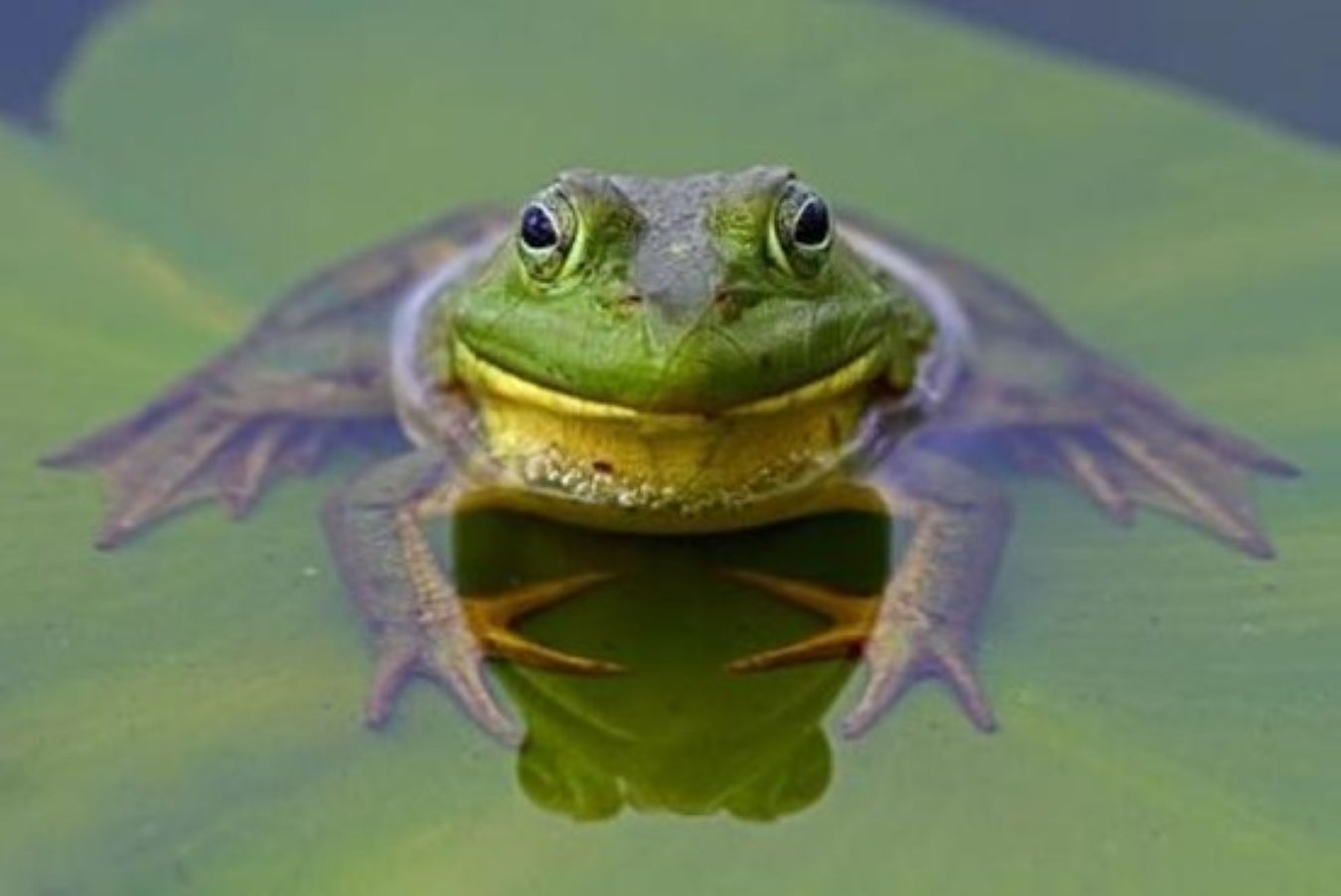April is National Frog Month
Published 3:54 pm Wednesday, April 26, 2023
|
Getting your Trinity Audio player ready...
|
Submitted by Roosevelt Robinson
Urban Regional Extension Agent
After passing winter at the bottom of ponds and lakes or nestled down into leaf litter on the forest floor, it’s no wonder frogs are ready to serenade Alabamians into spring. Emerging just as rain and melting snow create pools that will lodge their eggs and tadpoles during development, male frogs of many species start to coo females into producing a new generation of baby frogs.
April is National Frog Month, an initiative to encourage and educate everyone to take time to learn more about these croaking, jumping amphibians and their importance to ecosystems.
These harbingers of spring have long been subjects in the mythologies and folklore of people around the world for centuries. Frogs have been celebrated as symbols of transition, a leap from one place, thing, or situation to another – representative of fertility, prosperity, purity, and good luck. And of course, ladies have to “kiss” a lot of them to find their prince.
Unfortunately, frog populations have been declining worldwide at unprecedented rates. Threatened by disease, habitat loss, invasive species, pollution, and climate change, up to 200 species of frogs have completely disappeared since 1980. These cold-blooded amphibians with their protruding eyes, webbed hind feet, and moist skin have inhabited Earth for as long as humans, yet man’s population continues to increase while frog populations decrease.
This month, Americans celebrate the canaries in the global coal mine: frogs.
Within the many diverse ecosystems on Earth, every animal and creature has a crucial role to play in maintaining ecological balance. Frogs may seem like a minute part of this equation, but their importance is far greater than many may believe. Their existence and continuation assist global biological fitness and stability in numerous ways.
Throughout their life cycles, frogs occupy a vital position in the food chain as both predators and prey. As tadpoles, they consume algae, regulating blooms. Frogs are an important source of food for a variety of organisms, including birds, fish, and snakes. Loss of frogs may lead to fundamental breakdown in a food web with cascading effects throughout an entire ecosystem.
Frogs are important in research too. Skin secretions of frogs have the potential to significantly improve human health through their use as pharmaceuticals. Roughly 10% of Nobel Prizes in Physiology and Medicine are a result of investigations utilizing frogs. The painkiller Epibatidine is 200 times more potent than morphine and is synthesized from various species of poison dart frogs. Toxins of frogs are very diverse, explaining why they are being studied for their medicinal properties and potential use as therapeutic drugs.
Frogs also keep insect populations under control. They are biological control agents as they eat billions of insects each year. By and large, most frogs eat a carnivorous diet consisting of locally available insects and mollusks such as crickets, dragonflies, flies, grasshoppers, larvae, mosquitoes, slugs, spiders, snails, termites, and worms. This reduces the need for harmful pesticides that could ultimately cause harm to all organisms.
But the most important contribution frogs make may be their role as an early warning for endangered ecosystems. Due to their intricate life cycle and moist, permeable skin that can easily absorb bacteria, chemicals, and other contaminants, frogs are subjected to both land and water pollution. These traits make them susceptible to changes in the environment. Since they never journey far, remaining in relatively confined regions throughout their lifespan, frogs are good indicators of local and global environmental conditions. When pollution or other environmental changes affect a habitat, frogs are often the first casualties.
Looking for some inspiration on how to celebrate? Here are just a few ideas you may want to try.
Participate in FrogWatch, nationwide volunteer frog monitoring program, which helps citizen scientists young and old understand the significance of frogs as an indicator of environmental health. Participants are trained to identify frog calls, collecting, recording, and submitting their findings for scientists to study.
Or, create a frog-friendly backyard. Make a small shallow pond in a partly shaded area. Utilize thick ground cover plants around portions of the pond, providing an area of warmer and cooler water. Make sure the pond has sunlight. This encourages algae and other plants to grow, providing food for tadpoles. Ensure the banks of your pond slope gently. This way frogs can get out. Adding rocks and logs also provides shelter for adult frogs.
For more information, visit aces.edu.






